new posts in all blogs
Viewing: Blog Posts Tagged with: revise, Most Recent at Top [Help]
Results 1 - 25 of 94
How to use this Page
You are viewing the most recent posts tagged with the words: revise in the JacketFlap blog reader. What is a tag? Think of a tag as a keyword or category label. Tags can both help you find posts on JacketFlap.com as well as provide an easy way for you to "remember" and classify posts for later recall. Try adding a tag yourself by clicking "Add a tag" below a post's header. Scroll down through the list of Recent Posts in the left column and click on a post title that sounds interesting. You can view all posts from a specific blog by clicking the Blog name in the right column, or you can click a 'More Posts from this Blog' link in any individual post.
I’m revising my WIP novel one scene at a time and finding places where I need to do lots of work. Specifically, I want scenes that pivot.
A scene is self-contained section of the story. Characters come into a scene with a goal and they either reach their goal or not. The scene should have a beginning, middle and end. And, according to THE SCENE BOOK by Sandra Scofield, your scene also needs a pivot point.
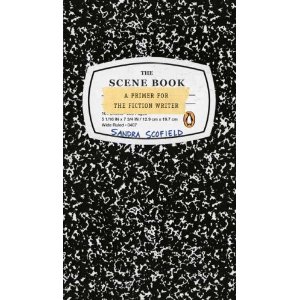
Scofield says that characters go into a scene with a goal, with something they are fighting for. But at some point the story twists, deepens, or changes in a fundamental way.
If you don’t have one, the scene is boring. Think about where the scene’s essence lies: the point at which everything changes. There if Before X and After X. X is the focal point. – Sandra Scofield, p. 54, The Scene Book
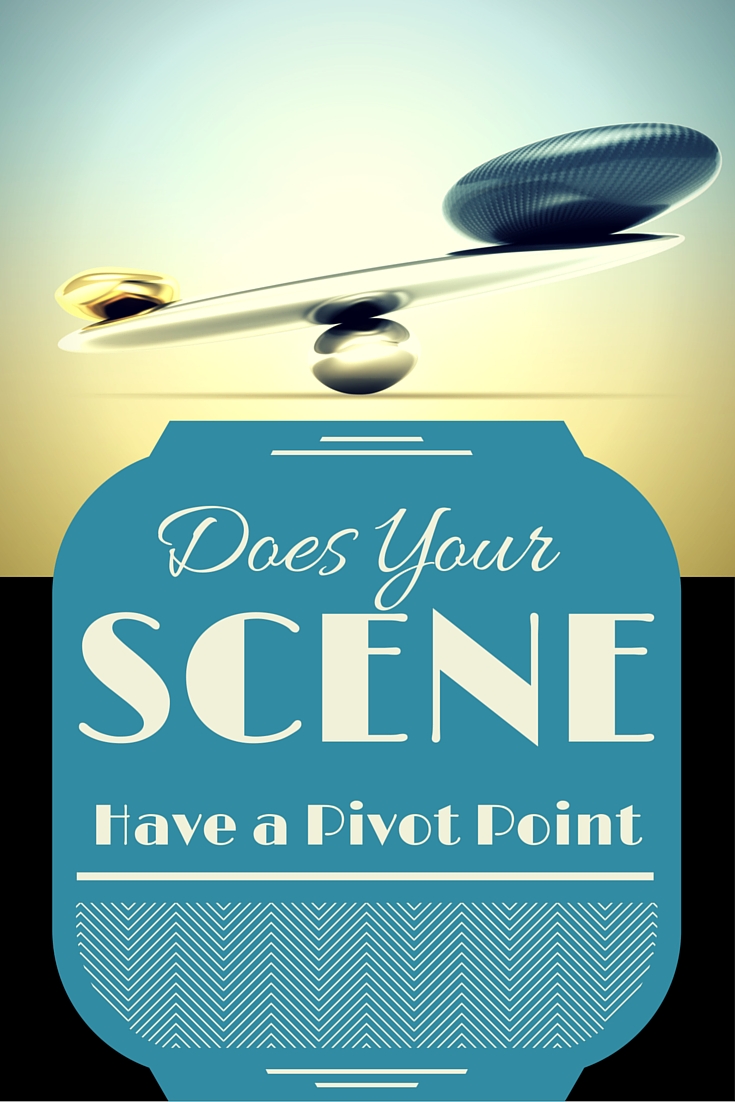
It’s a hard concept in some ways to talk about, but you know it when you see it. In this short scene from the movie,”Good Will Hunting,” the focal point, pivot point, hot spot, turning point, or apex is when Will steps in to help his friend. This is a great example because it shows the character in action, doing something that matters.
If you can’t see this video, click here.
By contrast, some scenes in my WIP just sit on the page. For example, I have one scene where the main character meets the romantic interest character. There’s a lot of characterization going on; they are at a coffee shop where she’s a barista and he’s ordering a special coffee drink; there’s some humor. But the scene still felt flat. Until I realized that there’s no real pivot point, no fulcrum for the scene. To change it, he asks a simple question, “Who are you?” That launches her into a humorous, but character-revealing pseudo-tirade, which results in him really paying attention to her and finding that he’s VERY attracted. Before the tirade, he’s not interested; after the tirade; he’s hooked.
To revise your scenes, fill in the blanks:
Before _____________(Pivot Point), my character _______________; AFTER _______________(Pivot Point), my character ____________________.
Find a way to pivot somewhere in each scene–and you’ll hook me as a reader!

I’ve written before about revising based on critiques and editorial letters covering both the emotional upheaval and the how-tos.
You’d think I’d know what I’m doing by now.
But each revision brings challenges. I’ve been struggling through the line edits on my manuscript and I’ve found them to be of three general types:
Clarity. My original wording is unclear. The line edit added clarity. These, I keep or modify even further to make sure I’m clear. Writing is the act of putting something on paper that reproduces a thought EXACTLY in the reader’s mind. That’s makes clarity the first goal of all writing. Otherwise, the communication fails.
Technical issues. This might include subject-verb agreement, verb tense, etc. I’ll almost always do this.
Matters of choice. Some edits however, just seem to be a matter of personal preference. Which way would you say this?
- It was like a dolphin’s tail.
- It was akin to a dolphin’s tail.
Both versions are clear; there are no technical issues. On line edits like this, I do what I want. Or more specifically, I look at the surrounding text and ask myself, “Would I write that? Is that my voice?”
I won’t accept any line edits that change my voice or try to force it into other paths. I’m not foolish: I consider the edit because maybe I was lazy when I wrote this paragraph and I wasn’t thinking of the best choices. Often, however, it’s how the editor would have phrased it and it’s not my voice. No go. I won’t change that.
Line edits, then, take time. You must consider each one in turn and decide to keep it, modify it even more, or reject it.
And that’s the problem right now. I’m bogged down in line edits. Talking with a friend, she said it a different way: you need to re-read the editorial letter at different points in the revision.
Editorial letter. Oh, yeah. That. There is a long editorial letter that addresses overall issues of plot, characterization, pacing, and backstory. THAT is what I really wanted to focus on for this revision. Instead, I’m just tediously going through line edits.
Revision is a combination of micro and macro. You must go deep into the words and sentences used to tell the story–the line editing. But at the same time, you must pull back and take a wider view. I’ve been lost in the details for the past week. My plan for this week is to reread the editorial letter and choose a couple major issues to focus my writing efforts.
But even on the major issues raised in an editorial letter, I’m not likely to agree with the editor on everything. One thing a writer brings to a novel is a unique sense of what makes a story. There are no rights and wrongs in this business, only opinions. My sense of Story (with a capital S) is different from the editor’s sense of Story.
Seldom do I do EXACTLY what a revision letter details. Instead, I read the editor’s thoughts with an eye toward understanding the heart of the issues raised. Then, make revisions based on that. It’s the difference between mechanically following a set of directions and understanding why those directions were given. Don’t blindly follow your editor’s advice: Go to the heart of the issues raised and find your own answers.
Do you struggle with going from micro to macro levels of revision?



By:
Darcy Pattison,
on 7/22/2014
Blog:
Darcy Pattison's Revision Notes
(
Login to Add to MyJacketFlap)
JacketFlap tags:
novel,
scene,
plotting,
write,
revise,
action,
Novel Revision,
plot points,
off-stage,
Add a tag
The ALIENS have landed!
"amusing. . .engaging, accessible," says Publisher's Weekly
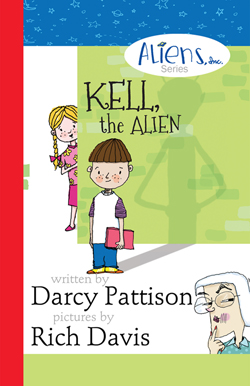 |
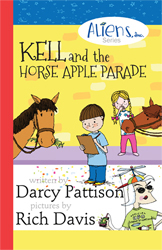 |
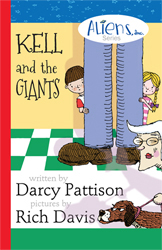 |
Here’s a common problem that I see in first drafts: the main action has happened off-stage.
Think about Scarlett O’Hara and the other southern women sitting at home waiting; in an attempt to avenge his wife, Frank and the Ku Klux Klan raid the shanty town whereupon Frank is shot dead. But the raid takes place off-stage.

Or, think about times when a weaker character stays home, while the adventurous character is off doing something. Sports stories are hard when the POV character is watching the on-field action.
This can be a real trap for children’s novels if an older sibling or parent is doing something fun/exciting/scary/etc off stage.
Another challenging situation is when a bully is planning something and the POV victim is just trying to avoid that.
Or, maybe you’ve planned a great scene, and the main character is present, but you don’t write that scene. Instead, what you write is something like this: “The next morning, Elise lay in bed and went over the previous night in her head.”
No. That doesn’t work!
Does this always need to be changed? No. But it’s a major problem and challenge as you revise. Here are some tips.
Recognize the problem. As you write the first draft and revise it, you should be evaluating the scenes. Ask: Who hurts the most in this scene. It should almost always be the main character. If it’s someone else, why isn’t THAT character the hero/ine of the story?
Put the POV Character in the action. When you find a scene where the main action is off-stage, look for ways to rethink the plot and scenes and put the main character in the thick of the action. It’s why Captain Kirk leaves the Enterprise and goes down to the planet over and over and over. Really? No Captain would be allowed to jeopardize his life that much and give over the control of the ship to a junior officer. It’s unrealistic–but great storytelling.
Make the story about how the off-stage action affects the POV character. In Gone with the Wind, Frank and the other men go off to avenge Scarlett’s honor, but the POV stays firmly with Scarlett. It’s about her growing realization of what the men have gone off to do, the opinion of the other women, and eventually the women’s reactions when the men come back. This is a risky way to write a scene, because the real stuff happens off stage; but it can work if you keep the focus right.
Write the scene. If your character is just thinking about what happened last night, it’s a simple fix. Write the @#$@#$@# scene! Sometime this happens when the author is afraid of the emotions in a powerful scene; the author avoids writing that scene and tries to jump forward in time. It never works. You must write the scene that you fear. you must write the exciting scene because your reader demands it; that is the exact reason why they come to your story. Don’t cheat them out of the emotionally experience.

When you revise, do you do minor surgery or major surgery on your novel? Most of us revise multiple times, but some revisions are bigger than others. I believe in making incremental changes, that is, getting it mostly right and then doing a series of tweaks. The change isn’t huge, but the results are important. It’s a striving for perfection! Most of us can’t write a perfect novel the first time round. Instead, you go back and fix, tweak, play with and otherwise revise, till it satisfies that inner critic and is sent off into the world.

Google Glass is not an incremental change from previous ways of consuming digital information. It’s a quantum leap ahead of other ideas.
But sometimes, incremental changes aren’t enough. In a fascinating report, Jon Gertner wrote an article, “Inside Google X,” Fast Company magazine, May, 2014. In order for a project to be accepted by Google X labs, it must pass three criteria:
- It must address a problem that affects millions or billions.
- It must be a radical solution with a science fiction component.
- It must tap technologies obtainable today.
They want the scope of the problem solved to be huge. But notice that beyond that, they aren’t asking for a technological break-through; in fact, if a product NEEDS a technological break-through, they will shelf it until the technology is available. They aren’t doing research and development for technology, but for the application of technology. Google X labs is asking for an idea breakthrough, a breakthrough in the way they think about a problem.
The biggest projects coming out of Google X (so far!) are driverless cars, Google glass, high altitude wi-fi balloons, and glucose-monitoring contact lenses.
Sometimes, writing fiction also needs a breakthrough in thinking: I call these revision Quantum Leap Revisions. This type revision shakes the very structure of your story and asks you to rethink anything and everything about your story except the “Heart of Your Story,” or that thing that made you write the story in the first place.
Just as Google X Labs operates with existing (or obtainable) technology, Quantum Leap revisions relies on your current knowledge and understanding of the craft of writing. We’re not asking you to be a better writer; rather, we’re asking that you think harder about the story and how you’ll tell that story.
You may cut characters, add characters, change the ending, replot with drastically different themes, delete half the book, expand the book to double its current size, and so on. The point is that this isn’t an incremental change–a tweak. It goes back to the basics, rethinks the whole story and builds it from the foundation up. You gut the building. You bull-doze everything but the foundation.

Will you re-envision your novel? See it in fresh, new ways?
Types of Incremental Revisions
When you editing for grammar, spelling and punctuation, it’s an incremental change. Fleshing out a story can often be incremental as you add details here or there to make the story more specific in hopes that it comes alive in the reader’s mind. Minor deletions, addition, moving around of scenes/chapters can be incremental.
Types of Quantum Leap Revisions
Here are examples of potentially huge re-envisioning of your story.
- Change POV
- Add characters
- Combine characters
- Delete characters
- Delete chapters/scenes
- Expand chapters/scenes
- Replot with major changes
- Use a different voice
- Switch genres
- Switch age level of your audience
Draft #2: Focus Shifts from Novelist to Reader
When should you do an incremental change and when should you do a Quantum Leap revision?
The function of the first draft is to find your story.
The function of every other draft is to find the most dramatic way to tell that story.
This change in the focus of your story–from you to the reader–means that draft #2 is probably the best time for a Quantum Leap revision. You may need several such huge revisions before you find the right way to tell your story. Once you figure out how to grab the reader and keep them reading, you can switch to incremental changes and keep at it till the story is polished.
Do you do a Quantum Leap revision for every story? Or do you mostly do incremental changes?


" Saucy is a real character dealing with real stuff—hard stuff that doesn’t have easy answers, not in real life and not in fairy tales, either. This is a really compelling and ultimately hopeful story. Highly recommended."
– Debby Dahl Edwardson, National Book Award finalist and author of
My Name is Not Easy
Read a sample chapter.
Our local critique group met yesterday and it was an exciting meeting. Almost everyone sent the first chapter of a new project. That’s exciting. It means that the group is healthy, that we are collectively working hard on our stories.
Critiquing Manuscripts
 I learn almost as much when I critique manuscripts, as when I get a critique. Because I come to a story with a fresh eye, I can see the strengths and weaknesses in ways that the author can’t. It helps me to understand the role of a reader better.
I learn almost as much when I critique manuscripts, as when I get a critique. Because I come to a story with a fresh eye, I can see the strengths and weaknesses in ways that the author can’t. It helps me to understand the role of a reader better.
Two things strike me: First, the author must put it on the page. When I ask for clarification on something, the author ALWAYS launches into an explanation. In other words, in her mind, it’s perfectly clear. The problem is that it didn’t get onto the page.
Second, our work is iterative. That is, we do a version, and then tweak, and then repeat and repeat and repeat. With each revision, the story is closer to perfect. We close the gap on communicating clearly and with emotion. One author’s plot and characterization were great except it lacked emotion. Can you layer that in later? Of course. Anything can be layered in later. That’s the revision process.
First Drafts. But this time, the main thing I said was, “Keep going!” These were mostly the first chapter of a new project and at this fragile moment of the writing process, the writer mostly needs encouragement to continue. For one writer, this is especially important because this was the first chapter of the very first novel she has ever attempted. At that point, well, all you can do is turn cheerleader. “Go! Go! Go!”
Getting Critiqued
When it was time for comments to turn to my own story, I felt the familiar stomach pinch that says, “Please love me.” But that quickly turned into the wise and mature response (Ahem!), “Please tell me the truth.”
It seems I have a major plot problem in the story. Two people noticed it and others agreed. And, well, OK, I sorta agree. Ok. I do agree.
And the revision won’t be that hard or that major when I sit down to do it.
In fact, I’m excited. The story pleased me, but I knew I was still in the early phases of revision. The critique groups comments were MORE than I ever hoped for. Exactly what I needed.
Why do we ever fear feedback? Ours is a business of communication. Ideas, characters, images–things in my head should be reproduced in the reader’s head EXACTLY, through the medium of words written on a page. Duh! I need to check that the communication actually happened. And when it’s not passed on EXACTLY, I need to tweak.
Thanks, critique group! You’re the best!

I just did a quick revision of a picture book that’s in progress.
Shorter. One goal was to shorten the story whenever possible. I cut out an entire page, and an entire sentence. Doesn’t sound like much? At only 700 words, the story is as streamlined as I can make it. Well, no. I just cut out one page and a sentence. Honing the text to the tightest possible is important for picture book texts.
When I’m asked to read someone’s manuscript, here’s my main comment: Cut it in half.
And a friend adds this: After cutting it in half, cut another 100 words.
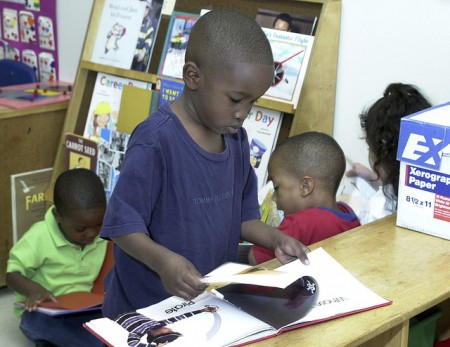
Classroom reading center: Will your picture book be useful in the classroom?
The
Common Core education standards are a couple years now and their requirements are definitely on my mind. I am constantly consulting the standards for each grade level and working to make sure the picture book is useful in the classroom. Because I write for early elementary, I consider this a crucial aspect of what I do.
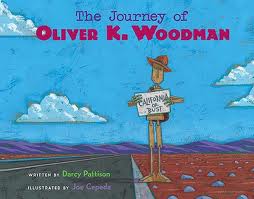 First, I focus on the story. Is the story itself compelling and interesting for the audience? If so, then can I add anything that will enhance it’s use in the classroom, without changing the essential story elements? For example, my picture book, THE JOURNEY OF OLIVER K. WOODMAN is now ten years old and still selling well. Part of the reason is that the story is told in letters and postcards. Of course, children’s learn about writing letters and postcards in early elementary, so this book is a natural for teachers to use as a mentor text. The story came first and demanded to be written in an epistolary (big word for letters) format. But after the story worked, then the layout and design decisions enhanced its usefulness in the classroom. Story first; but don’t ignore the book’s classroom usefulness.
First, I focus on the story. Is the story itself compelling and interesting for the audience? If so, then can I add anything that will enhance it’s use in the classroom, without changing the essential story elements? For example, my picture book, THE JOURNEY OF OLIVER K. WOODMAN is now ten years old and still selling well. Part of the reason is that the story is told in letters and postcards. Of course, children’s learn about writing letters and postcards in early elementary, so this book is a natural for teachers to use as a mentor text. The story came first and demanded to be written in an epistolary (big word for letters) format. But after the story worked, then the layout and design decisions enhanced its usefulness in the classroom. Story first; but don’t ignore the book’s classroom usefulness.
Details. The Work-in-progress is about cats and I’m looking at about 20 cats that could be used in various places in the story. Which cat goes where? It’s a balancing act which requires me to know something about different cat breeds and match them to my story. I also have to carefully tabulate and re-tabulate which breeds I’ve used. I can’t use one breed twice, but each of the 20 breeds must be used. Check. No, move that one to this place. Re-check. It was a morning of detailed work!
Research.
I know–everyone loves cat videos. But have you ever seen a Devon Rex cat?
If you can’t see this video, click here.
In case you were wondering, according to the Cat Fancier’s Association, here’s the top 20 most popular cat breeds in 2013. (In other words, I am doing research to document and justify the breeds I am using in the story.)
RANK BREED
1 Persian
2 Exotic
3 Maine Coon Cat
4 Ragdoll
5 British Shorthair
6 Abyssinian
7 American Shorthair
8 Sphynx
9 Siamese
10 Devon Rex
11 Norwegian Forest Cat
12 Oriental
13 Scottish Fold
14 Cornish Rex
15 Birman
16 Burmese
17 Tonkinese
18 Siberian
19 Russian Blue
20 Egyptian Mau

MIMS HOUSE: Great NonFiction for Common Core

The story of the oldest known wild bird in the world. At 62+, she hatched a new chick in February, 2013. Read her remarkable story. A biography in text and art.
Gifted and Talented
If you have finished a draft of a novel (however messy!), you are Gifted and Talented.
The fact that you are Gifted and Talented has an important implication for revising your story.
 GT Learners. First, I’ve talked with Gifted and Talented Teachers about how their students learn. When they learn something new, there’s a stage where they are very uncomfortable. Usually, GTs learn quickly and easily; they catch on. But sometimes the material is more difficult than usual, or more complex, or more puzzling. For some reason, they don’t catch on. They are unsure of what to do next.
GT Learners. First, I’ve talked with Gifted and Talented Teachers about how their students learn. When they learn something new, there’s a stage where they are very uncomfortable. Usually, GTs learn quickly and easily; they catch on. But sometimes the material is more difficult than usual, or more complex, or more puzzling. For some reason, they don’t catch on. They are unsure of what to do next.
At that point, GTs get uncomfortable and since they are rarely uncomfortable with learning, they often bail out. Anger, frustration, fear, impatience–do you experience some of these emotions when you face a revision that just doesn’t seem to be working?
The very fact that writing well is a process of revision is frustrating to a GT. They are used to getting things right the first time around. Maybe the first obstacle is embracing writing as a process.
Once you accept the process, though, you must also accept that facing difficulties in the revision process is normal! But if you’re a GT (and you are!), then it’s doubly frustrating because you so rarely face things that are hard. When I do the Novel Revision retreat, I warn the writers that they may hit a brick wall sometime during the weekend. The process of thinking about revision may start to overwhelm them.
Forewarned is forearmed. I try to head off the problem of frustration by warning that it is inevitable. When revising your story, you will face difficulties. This is normal! Let me say that again: Difficulties are normal. To be expected. Inevitable. A normal part of the process.
You have two choices: face them squarely and deal with them; avoid them and quit. And of course–you can’t quit!
As a GT, you are uniquely qualified to solve difficulties in revising because you do catch on quickly. You know how to locate and use resources that will help. You absorb information from a wide variety of sources. Given a day or so, you could probably tell me 30 ways that others have solved similar problems.
If you have a complete draft of a novel done, you are Gifted and Talented. That’s good news. It might mean you have a lower threshold for frustration, but in the end, it means you’ll make it through the writing process in great shape.
Perseverance or just plain Stubbornness
 We’ve heard the stories: Dr. Seuss? first book, To Think I Saw It on Mulberry Street (1937) was rejected twenty-eight times. Neil Simon, in Rewrites: A Memoir tells of over twenty drafts needed for his first play.
We’ve heard the stories: Dr. Seuss? first book, To Think I Saw It on Mulberry Street (1937) was rejected twenty-eight times. Neil Simon, in Rewrites: A Memoir tells of over twenty drafts needed for his first play.
Most of us would have to agree with Vladimir Nabokov, “I have written–often several times–every word I have ever published. My pencils outlast their erasures.”
Or Dorothy Parker, “I can’t write five words but that I change seven.”
Or John Kenneth Galbraith who jokes, “There are days when the result is so bad that no fewer than five revisions are required. In contrast, when I’m greatly inspired, only four revisions are needed.”
Or Truman Capote, “I believe more in the scissors than I do in the pencil.”
We understand that revising means doing it again until it’s right. But psychologically, that means the best trait a writer can have is stubbornness. On days when there is no hope sheer perseverance takes over.
Help
On those days, I highly recommend Art and Fear by David Bayles and Ted Orland. It?s my favorite books on the psychology of making art and goes into much more detail on many more subjects than I can here in five days. There have been days–like when I got that rejection of a novel after two revisions and fourteen months of dealing with an editor–that all I can do is sit at my desk and cry and re-read this book.
And start again.
Perseverance comes in two forms: revising until the story is right and making your art your way over a lifetime. It took Dr. Seuss twenty years after his first book to write The Cat in the Hat. ( 2007 annotated version). It often takes the work of years to hit your stride and produce your best work. We are in this for the long haul and this current book is just one of the waystations. Think career. Get stubborn. Persevere!
How do you deal with those deadly rejections?

Now available!
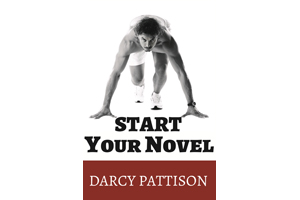
Guest post by Crystal Chan
Crystal attended a novel revision retreat a couple years ago and the result is this amazing book, her debut. Here, she talks about her revision process. –Darcy
The biggest editing challenge that I encountered my forthcoming novel, Bird (January 28, 2014, Atheneum. PREORDER NOW!) was trying to put too much “stuff” into the story. The protagonist, Jewel, is mixed race, in Iowa; her Jamaican side/grandfather believes there’s a duppy (read: ghost) roaming around the house; she was born on the same day that her brother died and there’s a load of unresolved grief in the family; a new boy comes to town with the same name as her dead brother and looks a little like how he would have looked like had he lived; and this boy is unsettling the layers of silence in the family. Enough, right?
Wrong. I really wanted to add some cool stuff with the mother’s backstory, and I wanted to do so to highlight the mixing of cultures that Jewel needed to wade through, as well as to explain why Jewel’s mom was so emotionally distant. For those who care to know, Jewel’s mother had an aunt in a small town along the Texan border, and years ago this aunt, right after she gave birth to their first child, realized her husband (the mom’s uncle) was cheating on her, and she ran out of the house in grief, and they found her, dead, along a riverbank. The baby died soon afterward. The townspeople said that her aunt had turned into the Llorona, a Mexican banshee who drowned her children, regretted it, and goes around killing adults in revenge (I’m skipping a lot of details here, bear with me).
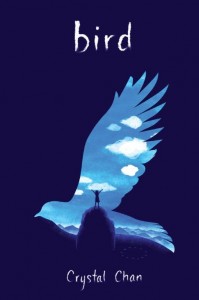
Anyway. This backstory, as interesting and pertinent to Mexican culture as it might have been (the Llorona is well, well known among Mexicans), was simply dragging down the story line, and much worse, muddling the story line entirely. I tried to make this work for at least three drafts, as I really wanted Jewel’s Mexican side to also get a showing in the story, but eventually (and with the utmost blessing of my editor) I opted to cut it out.
And I watched the story shine.
I found other, more subtle, ways to bring out Jewel’s Mexican heritage and explain her mother’s emotional distance – which was a lesson for me. There’s no one right way to make a story work. If one way is stuck, there’s always another way. But that requires being willing to backtrack, look at options, go back to the drawing board if necessary – which is scary (and humbling), since we invested so darn much in what we’ve already created. But then again, the question begs to be answered: Why are we writing? To push what we want, how we want it? Or to tell a story in the best way it needs to be told? Yes, sometimes writing that story means bearing down and slugging through the next version of the manuscript. Other times, though, it means opening our hands and letting go.

Crystal Chan
Crystal
:) www.crystalchanwrites.com
PS – and good news! Bird just sold in Romania!


By:
Darcy Pattison,
on 11/6/2013
Blog:
Darcy Pattison's Revision Notes
(
Login to Add to MyJacketFlap)
JacketFlap tags:
revise,
dramatic,
stream of consciousness,
monologue,
how to create,
omniscience,
story,
novel,
point of view,
character,
Characters,
characterization,
Add a tag
Now available!

How does an author take a reader deeply into a character’s POV? By using direct interior monologue and a stream of consciousness techniques.
This is part 3 of a 3-part series on Point of View: Techniques for Getting Inside a Character’s Head. Read the whole series.
Outside
Outside/Inside
Inside
Going Inside a Character’s Head, Heart and Emotions
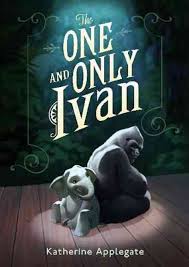 Omniscience.Jauss says, “In direct interior monologue, the character’s thoughts are not just ‘reflected,’ they are presented directly, without altering person or tense. As a result, the external narrator disappears, if only for a moment, and the character takes over as ‘narrator.’” (p. 51)
Omniscience.Jauss says, “In direct interior monologue, the character’s thoughts are not just ‘reflected,’ they are presented directly, without altering person or tense. As a result, the external narrator disappears, if only for a moment, and the character takes over as ‘narrator.’” (p. 51)
Here, “. . . the narrator is not consciously narrating.” In much of IVAN, he is consciously narrating the story. Sometimes, it might be hard to distinguish the difference because the character and narrator are the same, and it’s written in present tense (except when he is telling about the background of each animal). This closeness of the character and narrator is one reason to choose first-person, present tense. But there are still times when it is clear that IVAN is narrating his story.
But there also times when that narrator’s role is absent. In the “nine thousand eight hundred and seventy-six days” chapter, Ivan is worried about what Mack will do after the small elephant Ruby hits Mack with her trunk:
“Mack groans. He stumbles to his feet and hobbles off toward his office. Ruby watches him leave. I can’t read her expression. Is she afraid? Relieved? Proud?”
The last three questions remove the narrator-Ivan and give us what Ivan is thinking at the moment. The direct interior monologue gives the reader direct access to the character. With a third person narrator, those rhetorical questions might be indirect interior monologue; but here, because of the first person narration, it feels like direct interior monologue.
Or, in the “click” chapter, Ivan is about to be moved to a zoo:
The door to my cage is propped open. I can’t stop staring at it.
My door. Open.
The first two sentences still feel like a narrator is reporting. But “My door. Open.” feels like direct access to Ivan’s thought at that precise moment. He’s not looking back and reporting, but this is direct access to his thoughts.
A last technique for diving straight into a character’s head is stream-of-consciousness. Jauss says, “. . . unlike direct interior monologue, it presents those thoughts as they exist before the character’s mind has ‘edited’ them or arranged them into complete sentences.” (P. 54)
When Ivan is finally in a new home at a local zoo, he is allowed to venture outside for the first time. The “outside at last” chapter is stream-of-consciousness.
Sky.
Grass.
Tree.
Ant.
Stick.
Bird. . . .
Mine.
Mine.
Mine.
What the reader feels here is Ivan’s wonder at the great outdoors. It’s a direct expression of Ivan’s joy in being outside after decades of being caged. We are one with this great beast and it gives the reader joy to be there.
Or look at the “romance” chapter, where Ivan is courting another gorilla.
A final note: Sometimes, an author breaks the “fourth wall,” the “imaginary wall that separates us from the actors,” and speaks directly to the reader. This is technically a switch from 1st person POV to 2nd person POV. But it is very effective in IVAN in the second chapter, “names.” Here, Ivan acknowledges that you—the reader—are outside his cage, watching him. It was a stunning moment for me, as I read the story.
“I suppose you think gorillas can’t understand you. Of course, you also probably think we can’t walk upright.
Try knuckle walking for an hour. You tell me: which way is more fun?”
Do stories and novels have to stay in one point of view throughout an entire scene or chapter? No. Not if you are thinking about point of view as a technique to draw the reader close to a character or shove the reader away. You can push and pull as you need. You can push the reader a little way outside to protect his/her emotions from a distressing scene. Or you can pull them into the character’s head to create empathy or hatred. You can manipulate the reader and his/her emotions. It’s a different way of thinking about point of view. For me, it’s an important distinction because my stories have often gotten characterization comments such as , “I just don’t feel connected to the characters enough.” I think a mastery of Outside, Outside/Inside, and Inside point of view techniques holds a key to a stronger story.
In the end, it’s not about the labels we apply to this section or that section of a story. These techniques can blur, especially in a story like IVAN, written in first person, present tense. Instead, it’s about the reader identifying with the character in a deep enough way to be moved by the story. These techniques–such a different way to think about point of view!–are refreshing because they give us a way to gain control of another part of our story. These are what make novels better than movies. I’ve heard that many script-writers have trouble making the transition to novels and this is the precise place where the difficulty occurs. Unlike movies, novels go into a character’s head, heart and mind. And these point of view techniques are your road map to the reader’s head, heart and mind.
This has been part 1 of a 3-part series on Point of View: Techniques for Getting Inside a Character’s Head. Tomorrow, will be Inside: Deeply Inside a Character’s Head. Read the whole series
Outside
Outside/Inside
Inside


By:
Darcy Pattison,
on 11/5/2013
Blog:
Darcy Pattison's Revision Notes
(
Login to Add to MyJacketFlap)
JacketFlap tags:
story,
novel,
point of view,
character,
Characters,
characterization,
revise,
dramatic,
stream of consciousness,
monologue,
how to create,
omniscience,
Add a tag
Now available!

Partially Inside a Character’s Head: OUTSIDE AND INSIDE POV
How deeply does a story take the reader into the head of a character. Many discussions of point of view skim over the idea that POV can related to how close a reader is to a reader. But David Jauss says there are two points of view that allow narrators to be both inside and outside a character: omniscience and indirect interior monologue.
This is part 2 of a 3-part series on Point of View: Techniques for Getting Inside a Character’s Head. Here are links to parts 2 and 3.
These posts are inspired by an essay by David Jauss, professor at the University of Arkansas-Little Rock, in his book, On Writing Fiction: Rethinking Conventional Wisdom About Craft. I am using Ivan, the One and Only, by Katherine Applegate, winner of the 2012 Newbery Award as the mentor text for the discussion.
 Omniscience. Traditionally, “limited omniscience” means that the narrator is inside the head of only one character; “regular omniscience” means the narrator is inside the head of more than one character.
Omniscience. Traditionally, “limited omniscience” means that the narrator is inside the head of only one character; “regular omniscience” means the narrator is inside the head of more than one character.
I love Jauss’s comment: “I don’t believe dividing omniscience into ‘limited’ and regular’ tells us anything remotely useful. The technique in both cases is identical; it’s merely applied to a different number of characters.”
He spends time proving that regular omniscience never enters into the heart and mind of every character in a novel. A glance at Tolstoy’s WAR AND PEACE, with its myriad of characters is enough to convince me of this truth.
Rather, Jauss says the difference that matters here is that the omniscient POV uses the narrator’s language. This distinguishes it from indirect interior monologues, where the thoughts are given in the character’s language. This is a very different question about POV: is this story told in the narrator’s language or the character’s language?
In IVAN, this is an interesting distinction because Ivan is the narrator of this story; it’s told in his voice. But as a narrator, there are times when he drops into omniscient POV. In the “artists” chapter, Ivan reports:
“Mack soon realized that people will pay for a picture made by a gorilla, even if they don’t know what it is. Now I draw every day.”
Ivan tells the reader what Mack is thinking (“soon realized”) and even what those who purchase his art are thinking (“even if they don’t know what it is”). Then, he pulls back into a dramatic reporting of his daily actions. Notice, too, that he makes this switch from dramatic POV to omniscient POV within the space of one sentence. And the omniscient POV dips into two places in that sentence, too.
Because Mack is Ivan’s caretaker and has caused much of Ivan’s troubles, the reader needs to know something of Mack’s character. This inside/outside level is enough, though. The author has decided that a deep interior view of Mack’s life isn’t the focus of the story. It’s enough to get glimpses of his motivation by doing just a little ways into his head.
Indirect Interior Monologue
Another technique for the narrator and reader to be both inside and outside a character is indirect interior monologue. Here, Jauss says that the narrator “translates the character’s thoughts and feelings into his own language. “ (p. 45) The character’s interior thoughts aren’t given directly and verbatim. This is a subtle distinction, but an important one.
Interior indirect monologue usually involves two things: changing the tense of a person’s thoughts; and changing the person of the thought from first to third. This signals that the narrator is outside the character, reflecting upon the character’s thoughts or actions.
They are all waiting for the train. (dramatic)
They were all waiting reasonably for the train. (Inside, indirect interior monologue)
The word “reasonably” puts this into the head of the narrator, who is making a judgment call, interpreting the dramatic action.
Interior indirect monologue most often seen with a third-person narrator reflecting another character’s thoughts. But in Ivan, we have a first-person narrator. Applegate stays strictly inside Ivan’s head, except for a few passages where Ivan reports indirectly on another character’s thoughts. Because the passages are already in present tense, she doesn’t have that tense change to rely on.
Here’s a passage that could have been indirect interior monologue but Applegate won’t quite go there. Stella is an elephant in a cage close to Ivan.
“Slowly Stella makes her way up the rest of the ramp. It groans under her weight and I can tell how much she is hurting by the awkward way she moves.”
By adding “I can tell. . .” it stays firmly inside Ivan’s head. He tells us that this is true only because Ivan makes an observation. The story doesn’t dip into the interior of the other characters.
But there are tiny places where the interior dialogue peeks through. This from the “bad guys” chapter. Bob is Ivan’s dog friend; Not-Tag is a stuffed animal; and Mack is Ivan’s owner.
“Bob slips under Not-Tag. He prefers to keep a low profile around Mack.”
Ivan can only know that Bob “prefers” something, when he, as the narrator, dips into Bob’s thoughts.
But indirect interior monologue is also used by a first person narrator to report his/her prior thoughts. When the first person narrator tells a story about what happened in his past, he is both the actor in the story and the narrator of the story. Ivan tells the story of his capture by humans over the course of several short chapters. It begins in the “what they did” chapter:
“We were clinging to our mother, my sister and I, when the humans killed her.”
While Ivan’s story is most present tense, this is past tense because Ivan is reporting on prior events. Even here Applegate refuses to slip into interior indirect monologue. Instead, she just presents the facts in a dramatic manner and lets the reader imagine what Ivan felt. It’s interesting that withholding Ivan’s thoughts here evoke such an emotional response in the reader.
On the other hand, in “the grunt” chapter, Ivan tells about his family. Again, he is the narrator telling about a past event when he was a main character of the event:
“Oh, how I loved to play tag with my sister!”
This could be called direct interior thought, but because he’s narrating a past event, it’s indirect interior thought. Otherwise, he would say, “Oh, how I love to play tag with my sister!”
Or from the “vine” chapter, where Ivan talks about his thoughts after being captured by humans:
“Somehow I knew that in order to live, I had to let my old life die. But sister could not let go of our home. It held her like a vine, stretching across the miles, comforting, strangling.
We were still in our crate when she looked at me without seeing, and I knew that the vine had finally snapped.”
If this was direct interior, it would be:
“Somehow I know that in order to live, I must let my old life die.”
Applegate could have chosen to stay inside Ivan, but here, she pulls back so the reader isn’t fully inside this emotionally disturbing moment. She uses indirect interior monologue, instead of direct.
As Jauss says about a different passage, but it applies here, “This example also illustrates the extremely important but rarely acknowledged fact that narrators often shift point of view not only within a story or novel but also within a single paragraph.” (p.50)
This has been proclaimed a mistake in writing point of view, but Jauss says it’s a normal technique. We dip into Mack’s point of view, but then pull back to a dramatic statement about what Ivan is doing.
Indirect interior monologue often includes “rhetorical questions, exclamations, sentence fragments and associational leaps as well as diction appropriate to the character rather than the narrator. “ (p. 49) In one of my novels, I used a lot of rhetorical questions as a way to get into the character’s head and an editor complained about it. Now, that I know why I was using it (as a way to manipulate how close the reader was to the character), I could go back and use a variety of techniques. Knowledge of fiction techniques is freeing! Tomorrow, we’ll look at how to go deeply into a character’s head, heart and emotions.
This is part 1 of a 3-part series on Point of View: Techniques for Getting Inside a Character’s Head. Join us tomorrow for the final part of the series, Inside: Going Deep into a Character’s Head.
This has been part 2 of a 3-part series on Point of View: Techniques for Getting Inside a Character’s Head. Tomorrow, will be Inside: Deeply Inside a Character’s Head. Read the whole series.
Outside
Outside/Inside
Inside

ONLY 3 DAYS LEFT
I am in the midst of a truly awful first draft. Really. I have NEVER written such a bad first draft.
This is a sequel and it must be written to roughly follow an outline, but the outline seems sorta dead.
Here’s what I am doing:
 Push on. I am pushing forward, trying to write something, anything. Sometimes, the story is flat and sometimes it sings. Doesn’t matter. My goal this week is to finish a draft.
Push on. I am pushing forward, trying to write something, anything. Sometimes, the story is flat and sometimes it sings. Doesn’t matter. My goal this week is to finish a draft.
Trust the process. I am trusting the process. I know that the story won’t end with this draft; there will be multiple drafts after this, plenty of time to fix the glaring problems of this draft. It’s the only reason I am allowing myself to forge ahead, because I know that this is a process, not a static thing that I work on once and never again.
Update: As I pushed forward this week, the story did indeed start to connect as a whole. There are still many elements that are unconnected, but I am confident that I can get there. I keep thinking about Linda Sue Parks comments about her Newbery title, A SINGLE SHARD (Clarion, 2001). She says that she tried to make sure each chapter has something that looks forward and something that looks backward. For example, if she has a character use a gourd to get a drink from a spring in one chapter, she makes it her rule to use that gourd again somewhere else. The story starts with a basket-backpack leaking rice; partly, it starts there because the main character uses a basket-backpack to carry his master’s pottery to the capitol. If the backpack was necessary to the story, according to her rules, she had to use it somewhere else. THAT is what is missing in my story right now. There are elements that I threw into the first draft–because that’s what first drafts are for–but I’m not sure yet, if they will weave into the fabric of the story. For example, the main character notices in chapter one that someone has a nickname and realizes that he doesn’t have one. Right now, the story doesn’t resolve that. I need to either remove the reference entirely–or the story has to deliver him with a really great, appropriate nickname.
Experiment. Everything is going so badly anyway, that I feel free to experiment. I am throwing in snatches of conversation, snippets of a scene, trying out wording for actions–in other words, experiment. I would say that I am playing, but this time, there is just the hint of despair in the writing, since it is going so very badly. I am really searching for a voice that works. Maybe it needs another narrator? Maybe it needs a different setting? Anyway, I am allowing tangents that I would normally cut off.
Role of First Drafts. Most of all, I remember: the purpose of the first draft is to figure out what story you are telling. The purpose of all other drafts is to figure out the most dramatic way to tell that story. I remember that I am figuring out what story I am telling. So–I allow myself to, well, to figure it out. Slowly, painfully–the story is starting to shine through. It will be there within this draft, waiting for me to recognize it and polish it. I am just trusting the process and writing a really lousy first draft.

There’s an excitement in the air! I’ve started a new novel project.
Here’s what I don’t want to happen:
I don’t want the excitement for this project to get bogged down and dribble away. It happens too easily, as life issues take over, as problems arise with the project, or just as the work drags on.
I don’t want to talk bad about this project to anyone. Sometimes, I fall into the habit of complaining. This chapter or that character just aren’t cooperating! Why is this so hard? ARGH! I hate this project because it’s not going like I want. Nope. None of that this time. I love this project and I’m excited about it. I think my readers will love it, too. Hurrah! It’s such a joy to be working on such a great project.
I don’t want this project to drag on forever. I have scheduled two months to get a first draft done and I’m working hard on keeping to that schedule.
Here’s things I want to happen:
Joy. Excitement. Productivity.
Scheduling the Project
When faced with a big project, how do you break it down into manageable pieces?
I’ve already gone through the process of deciding what kind of novel this will be. Now, I just need to write it.
Here are the steps I plan to follow:
One page synopsis. I’ve written a one-page summary of the story, knowing full well that it would need to be fleshed out when the time comes. Now that the time is here, it’s easy to see where I want the story to go. There are huge gaps in the story, of course, but the one-page synopsis grounds the story in some particular issues.
Subplots to Detailed Plot.I am taking a day to flesh out some of the subplots. For example, one subplot will involve kids planning a parade. I spent today researching fun ideas to add to the parade and parade planning. Did you know that some parades these days require horses to wear diapers? It’s true. Horse poop on city streets–though once the norm–is now a no-no. There are special bags which are strapped to horses to catch their “meadow muffins.” (Now, see, isn’t that great language to use in a book? Meadow muffins. Horse apples.) Real life can be stranger than fiction: horse diapers.
I’ll take a day to research the other subplots and layout some ideas for developing the plot lines. Then, I’ll spend a day picking and choosing scenes to include and weaving them into the main plot line to create a detailed plot. That breaks the task of plotting into steps that I can manage. By approaching it from the subplot angle, I am free to make leaps and make errors: it doesn’t matter, it’s just a subplot. But in the end, I am sure that I’ll find some unique things to add to this story to make it more fun and funny.
WARNING: THIS 24-SECOND VIDEO SHOWS A HORSE POOPING. Your kids will probably love it!
If you can’t see this video, click here.
Characterization and character continuity. With a detailed plot in hand, I’ll double check the characterization needed. Because this is a second book in a series, much of the characterization is set up and I’ll need to continue it on, create an emotional arc for this book and make sure there is continuity. The first step will be the emotional arc for the character. I’ll need to make sure the external plot echoes the internal arc. This means a detailed summary of the story that includes the plot, subplots and character issues.
Revise. With a very long, detailed synopsis of the story, I’ll look for holes in logic, characterization and plot.
Write. Finally, I’ll use the synopsis to create a full draft–by Halloween.
This is a slightly different process for me, with more upfront planning. I’d like the full synopsis to be about 1/3 of the finished book, which will be enough detail to help me get the whole story done.

2013 GradeReading.NET Summer Reading Lists

Keep your students reading all summer! The lists for 2nd, 3rd and 4th, include 10 recommended fiction titles and 10 recommended nonfiction titles. Printed double-sided, these one-page flyers are perfect to hand out to students, teachers, or parents. Great for PTA meetings, have on hand in the library, or to send home with students for the summer. FREE Pdf or infographic jpeg.
See the Summer Lists Now!
Hurrah! You have a revision letter from an editor and you are going to make every single, solitary, revision the editor asks for. Right?
Maybe.
When can you say, “No,” to an editor?
You can refuse a contract for any number of reasons. Money, vision for the published manuscript, an unkind word. You never have to sign a contract.
Once a contract is signed, though, you are under contractual obligation to make reasonable changes to the manuscript. You should go into the revision process with a hopeful, positive attitude, expecting to do everything that the editor asks for. The mutual goal is a successful book, and the editor (presumably) knows what sells and how to improve your story to make it sell better.
What if you disagree? The editor is asking for some particular change in your story, and you think the editor is wrong? It’s time to try the editor’s way. Yes, try. Let’s hope that it does work.
If trying it the editor’s way doesn’t work, it’s time for diplomacy. Diplomacy is when you gently work through a difficult, sticky issue and wind up with a result that makes both parties happy.
Explain. When I have faced the problem of disagreeing with an editor, I did a long, detailed explanation of why I wrote the manuscript the way I did. In one case, I had chosen words based on assonance, or certain vowel sounds. The editor’s alternative completely destroyed the voice and sound of the piece. As soon as I detailed my strategy for writing, the editor agreed.
Suggest alternatives. On the other hand, you may be able to suggest a third alternative which incorporates part of the editor’s change, but keeps your ideas, too. The editor will likely agree because your mutual goal is a successful book.

Do not bring in outside comments at this point. It isn’t a time to say that your critique group loved it this way or that way. At this point–when the editor has put down cash–the editor’s opinion is the only one that matters (besides yours.)
Be kind and respectful. Your attitude is crucial. If you go into a conversation knowing that you disagree, you can still be courteous. Remember: your mutual goal is. . .
Be confident. Sometimes, the editor has pinpointed a problem and really doesn’t care HOW you solve it, as long as it gets solved. Editors often don’t know what they want; they just know that what is in front of them doesn’t work. Be confident of your writing skills! you can make the right decisions about your story. Go deeper, into the heart of the issues raised. Solve the problem in a unique way that blows the editor away. S/he won’t mind. Not at all. Because the mutual goal is. . .
The Ultimate No. Of course, you have the ultimate No. If you really, really disagree, and you can’t find that mutual agreement, you can–if you really have to–get out of the contract. It’s sticky and no one wants this. But you can back out. You probably have to repay advances, and know that this will affect your reputation. Weigh this action very seriously and carefully, and be sure you can accept the consequences. Don’t do it lightly. But yes, you are in control of your own story. You can say, “No,” to an editor.

The process of revising your novel or story is a series of decisions and understanding the decision process can strengthen your revision process.
Avoid Narrow Framing of the Story
You get a letter from an editor that says something like this: “When Michelle is shot with an arrow, I wonder if she really needs to die. What if she avoids the arrow entirely?”
This frames the revision in terms of whether or not Michelle will be shot with an arrow and then die. That’s too narrow a context for a revision decision, and leaves out many alternate options. What if, she is shot in the leg and can’t walk; or, she is shot in the eye and can’t see; or, she is shot and runs a fever and recovers; or, she avoids the arrow, but Jillian is shot instead; or, (fill in the blank)__________.
Or, you may get a revision note that says the final chapter/climax scene doesn’t have enough excitement and needs more action. Maybe. But what if you revise it, concentrating on the mood the scene evokes, working to make it tense and emotion-filled? Maybe the problem is Mood, not amount of Action present.
When you are presented with only two options, don’t accept that narrow framing of the revision question. You don’t have to answer a “whether or not” question. Work to find other alternates. Editors don’t care HOW you make the story work, only that you do something that works.
You wonder whether or not your character should be red-headed. Narrowly framed questions like this look at the revision in isolated chunks and that’s not helpful. Instead, ask, “How will the character’s hair color influence the story? What if she were blond? Brunette? Red? Black? White?” You don’t just want to know the effect in a small section of the story, but across the whole novel. That’s giving yourself some real options that can lead to decisions that create a stronger revision.
Remove the current option. One trick to make sure you are asking more open-ended questions is to remove the current option; that forces you to take a wider look at your story and its context.
Ask: What if there was no archer, no arrow? What if Michelle never walked into that dark woods where the archer was hiding? What scene could replace this one?
Recognize: The final chapter/scene isn’t working–yet.
Ask: What options do I have to improve the storytelling here?
Multiple answers: Add action, revise for mood, create a totally new scene, keep the action the same but change the setting, keep the setting but change the action, create a different emotional context, and so on.
Multi-track to Give Yourself Options
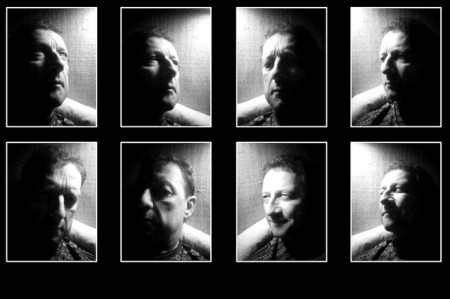
You’ve heard it suggested before: write ten openings to your story. Why do psychologists who study decision-making agree that this is good advice? Because multiple options create a real choice. (I am not talking about multi-tasking here, where you try to do 10 things at the same time; rather, you have multiple tracks ongoing, which gives you choices.)
For example, if you want to buy a house, you don’t just look at one house and make an offer. You would look at many houses, over an extended period of time. Or, to bring it back to publishing, when a book designer presents possible book covers, they don’t just do one cover with minor variations (do you want red or black type; should the typeface be 12pt or 16pt). Instead, they work to bring several totally different concepts to the table.
What do you think of this cover for The Lion, The Witch and the Wardrobe?

How does it compare to the other previous covers? Each has a distinct visual style. You want the same range of options when you revise.
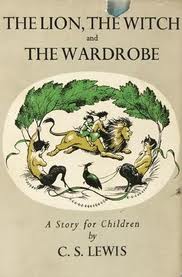
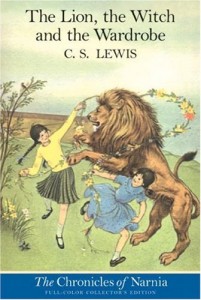

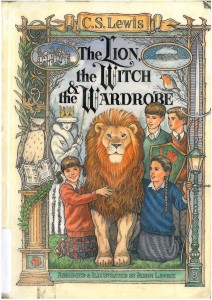
Researchers say it is much better to work simultaneously on several options, rather than to do them in sequence. In other words, write ten opening sentences and then choose where to go next. This is a stronger way of working than to write an opening sentence and follow it with an opening scene; then write a second opening sentence and alternate opening scene; repeat with a third. Working simultaneously on several options yields more creativity and does it faster.
When you create these options for yourself, beware of sham options, or of writing options that obviously will not work. Options that are too bold, the wrong tone, too clichéd, or otherwise obviously off the mark for this novel—these are not real options.
Which of these five would you say are sham options for an opening sentence for a Cinderella story? Which are real options?
- Once, long ago and far away, in a forgotten land, in a forlorn castle, there lived a girl whose mother had died.
- This is the story of Cinderella.
- The kitchen maid sank onto a small stool beside the fire and thrust her feet and hands toward the meager flame, ignoring the cinders that smeared the sole of her boots, permeated the thin fabric of her skirt. She was cold. Bone-cold and weary.
- Cinderella, dressed in yellow, went upstairs to kiss a fellow.
- The new step-mother arrived on a blustery winter day, bringing color and hope to the grieving castle.
When you are stuck on a revision decision, work to give yourself multiple real options. Don’t get stuck asking, should whether or not Michelle will get shot and die or not? Widen the context and find other options.
Overcoming Writer’s Block
What if you really are stumped and the dreaded Writer’s Block is looming on the horizon?
First, look at your manuscript for Bright Spots. I know—in our zeal to revise and improve our mss, we focus so much on places where things are going wrong, that we forget to acknowledge the places where things are going right. This revision strategy asks you to look for Bright Spots, Golden Words (highlight these with yellow marker), Emotional Scenes that make the reader laugh or weep, Exciting Action, or any other place where the writing worked. Try to determine, what made it work?
What did you do well? Can you clone that success?
Approach a scene in the same way as before. What was your process for writing that scene? Repeat it for the scene where you are stuck. How did you create those emotions? Did you concentrate on reliving an emotional episode from your life? Did you mechanically go through and question every verb?
Look at your process, your inspiration, your word choices, the rhythm of the sentences—anything that worked before—and clone it.
If your own Bright Spots don’t help enough, then look for a Mentor Text, someone else’s writing that does what you want to do and try to clone that Bright Spot. Don’t worry about wholesale copying from someone else; you will add your own spin to it. You’re only looking to borrow a storytelling strategy.
Look first at stories similar to yours: if you write YA mystery, look to other YA mysteries. If you can’t find a Mentor Text there, though, don’t hesitate to look farther afield. Maybe a historical non-fiction uses some diary entries to create a sense of historical validity. Could you use fictional diary entries to do the same thing in your story?
Fill in this:
This revision problem is similar to ____________(title of mentor text). This book, solved a storytelling problem similar to mine by________________________.
In other word, you just used an analogy, comparing your storytelling problem to another book/story. If the Mentor Text used a first-person point-of-view, maybe that will work for your story, too. If the Mentor Text used a particularly effective description of the setting—even if the settings are vastly different—maybe that strategy will work in your story.
A variation of this would be to look at Best Practices of writing a novel. For example, Best Practices says that you should never add a flashback to the opening chapter. Oops! You did that. We read many books on how to write a novel, looking for these “best practices,” advice on how to write and revise better. And you would be foolish to ignore creative writing Best Practices. These are a sort of Playlist of Bright Spots.
However, you may also want to try doing the exact opposite of Best Practices. Nothing says it can’t work, it will just take more creativity to make it work.
When you revise a novel or story, you are making a series of decisions, important ones. Look at your decision-making processes to see if you can make smarter decisions and make them faster.


By:
Darcy Pattison,
on 1/21/2013
Blog:
Darcy Pattison's Revision Notes
(
Login to Add to MyJacketFlap)
JacketFlap tags:
podcast,
fiction,
novel,
character,
Podcasts,
plot,
revise,
shrunken manuscript,
fiction notes,
Add a tag
Welcome to the first Fiction Notes Podcast, where you’ll learn six ways to use the Shrunken Manuscript.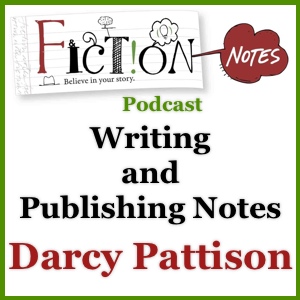
I teach a novel revision retreat; in order to attend, you must have a complete draft of a novel and we spend the weekend talking about how to revise that manuscript. The workbook for that is Novel Metamorphosis: Uncommon Ways to Revise. Traditionally, we only go into depth on the Shrunken Manuscript technique in the retreat, but for the first time publicly, I’m going to explain six ways to use the Shrunken Manuscript. It’s a fitting topic for Fiction Notes’ first Podcast.
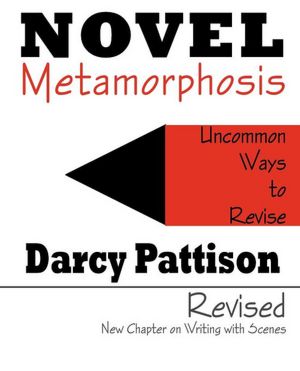
ShowNotes for Fiction Notes 001: Shrunken Manuscript
1:45 Instructions on Shrinking a Manuscript
3:32 Seeing your strongest chapters
8:49 Seeing your major plot points
11:49 Seeing your antagonist v. protagonist
14:22 Seeing your character arc
17:17 Seeing your scenes
18:42 Seeing your novel’s pacing
Items Mentioned in this Podcast:
Need more information on revising a manuscript?
Podcast FAQ
How do I listen to the podcast?
You can listen to it by simply clicking on the arrow on the Podcast PlayLink.
You can also download the podcast and play it on your iPod, iPhone, etc.
You can embed the podcast onto other websites. If you do this, please let me know! (darcy at darcypattison dot come).
The podcast will soon be syndicated on iTunes and when it is syndicated, you can use a variety of apps to download and listen to it from a variety of platforms, such as iPod, iPhone, iPad, Android, etc.

The kindergarten class in Room 9B was an odd class.
The kindergarten class in 9B was odd.
Which sentence is more effective?
What is the most important work in the sentences?
Odd. It’s an important word because it distinguishes this class from all others. The next sentence of my picture book 19 Girls and Me tell the reader that this class has “19 girls and one lone boy.”
My point here is that sentences can be structured to emphasize—or deemphasize—anything you choose. Where do you want the reader to pay attention?
When you read a sentence you remember or pay attention to the end of the sentence the most. The second best position for memorable information is the beginning of the sentence. When you bury a word or phrase in the middle of a sentence, it is less memorable.
In my picture book, WISDOM, THE MIDWAY ALBATROSS, I wanted to emphasize that when an albatross first migrated, it doesn’t come back to land for years. Look at the difference in these two sentences. The first emphasizes the time a bird flies. The second emphasizes that the bird soars.
She soared for five or six or seven or eight years.
For five or six or seven or eight years, she soared.
It’s a subtle difference, but an important one for me, because I find it totally amazing that for years, she does nothing but fly. I wanted the reader to feel that same amazement. I also used soar, instead of fly because it more accurately captures the bird’s movement of flying on the thermals. There’s no wing flapping here because she has a special elbow joint that locks into position, keeping her wings outstretched. That’s soaring. Not flying.

You can also, though, use the technique to hide information in plain sight. Writing a mystery, you might choose to put a specific clue into the middle of a sentence. What if a bag of donuts was an important clue? Which sentence would you choose to use and why? Do you want the reader to remember the donuts or not?
Picking up the bag of donuts, she wheeled her bicycle onto Broadway and headed toward the river.
She wheeled her bicycle, donuts balanced on the handlebars, onto Broadway and headed toward the river.
Making for the river, she balanced donuts on the handlebars and wheeled her bicycle onto Broadway.
She wheeled her bicycle onto Broadway and headed to the river, donuts safely stashed in her bicycle’s basket.
She wheeled her bicycle onto Broadway and headed to the river, her bicycle’s basket full of hot, fresh donuts.
Interesting, is the use of the passive construction for the purpose of emphasis. Usually passive constructions are frowned upon because they make the action seem once-removed. But a passive construction is useful to push words to the end of the sentence for emphasis.
The street woman pushed a noisy shopping cart.
The squeaky shopping cart was pushed by a strange street woman.
To emphasize the shopping cart, use the first sentence. To emphasize the street woman, use the second—a great use of passive construction.

Adding emotional depth to a novel is important enough to warrant a special pass through the manuscript. This video talks about how I did that on a recent mss.
If you can’t see this video, click here.
This is an experiment with doing a video to explain something about writing and revising. Please comment and let me know what you think about doing this with video.

Guest post by Carrie A. Pearson
To research this post, I Googled “revision in writing” which generated about 50,600,000 results in 0.36 seconds.
Really? 50,600,000 results on this topic in less than a second?
Why is everyone interested in revision?
I have an answer: because it is so darn hard.
But why? Is it because we believe we’ve already (painstakingly) chosen the best words that could possibly exist? Because we can’t imagine it differently? Because we don’t want to do the work? (I doubt that; writers are some of the most diligent people I know.)
One theory on why revision is difficult is really deep so hang in there with me. . .
Every piece we write is generated from the emotional core of who we are, what we feel, and how we operate in the world. The words come from the center of us. It’s a place we can’t touch but we can feel — a network that neuroscientists call our “emotional system.” My smarty-pants friend, Phyllis Stien, MS in psychiatric nursing and co-author of a recognized neuroscience textbook, says this about our emotional system and writing:
“Authors may not recognize that their emotional systems organize and direct their thinking. Who they really are at their core is reflected in their writing. That’s why there are emotional themes or connections in finished books the author may not know existed until the book is dissected.”
(Isn’t that cool?)
But when we are asked to change our writing, to revise, it is unsettling to our emotional system, to say the least. We feel a discord and because of this, we resist.
The problem is revision is a necessity for writers, and like teeth cleanings, we really should learn to appreciate it or at least not hate it.
What can we do to revise better?
 Picture a puppy resisting a forward tug on a leash. Sometimes it takes reframing (or treats!) to change how we view the new direction. When I’m feeling off kilter and resistant, I go back to my intention for the piece and remind myself what I hoped to communicate. It wasn’t wrong the way it was originally – it just began from a different point in my emotional center. Stepping back in there allows me to reframe it and find my footing again — even if I have to take 50,600,000 tiny baby steps to get there.
Picture a puppy resisting a forward tug on a leash. Sometimes it takes reframing (or treats!) to change how we view the new direction. When I’m feeling off kilter and resistant, I go back to my intention for the piece and remind myself what I hoped to communicate. It wasn’t wrong the way it was originally – it just began from a different point in my emotional center. Stepping back in there allows me to reframe it and find my footing again — even if I have to take 50,600,000 tiny baby steps to get there.
More from Carrie A Pearson
Carrie is currently on a blog tour for her new book, A Warm Winter Tail. Make the rounds for her blog tour and comment on each blog–and you could be the lucky winner of an autographed book and plush animal.
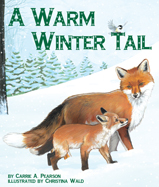 Carrie A. Pearson is the author of A Warm Winter Tail, a lyrical picture book about animal adaptations illustrated by Christina Wald and published by Sylvan Dell Publishing debuting this fall. She recently completed a MG historical novel, Chasing Home, requiring a lot of revisions, which she is querying now. www.carriepearsonbooks.com
Carrie A. Pearson is the author of A Warm Winter Tail, a lyrical picture book about animal adaptations illustrated by Christina Wald and published by Sylvan Dell Publishing debuting this fall. She recently completed a MG historical novel, Chasing Home, requiring a lot of revisions, which she is querying now. www.carriepearsonbooks.com

When you do a manuscript critique at a conference, you must be ready to push for an answer to a crucial question; and you must have a back-up plan.
I’ve been backstage at conferences, in the break room where the editors are gathering and chatting. I’ve heard them come back from a critique session and talk.
Editor: I told the writer that the story was great and the voice was great, but they just didn’t match up. This is a picture book, but the writing is like a YA novel. They just wanted to argue and tell me a long story about why they wrote the picture book. Why would they waste their time and my time that way?
Indeed. At a manuscript critique, you can expect to hear at least one good thing about your story. But then–you asked for an honest critique!–you will hear some things that are not-so-good, need-work, needs-rethinking, WILL-mean-a-total-revision. Duh. Editors are in the BUSINESS of telling writers how to revise. Do you think a critique will be any different? No.
So, when you go into a critique, expect a laundry list of things that need to be done. Do not take your ego into the critique with you. This cannot be an emotional breakdown. Take a notepad and take notes about what needs work? Ask critical questions that show you understand their opinion and would like to understand even deeper.
Close the Deal with a Crucial Question
After listening, politely ask, “If I make these revisions, would you like to see the manuscript again?” This is the REAL goal of your session, an invitation to submit this manuscript again.
If the editor responds yes, you’re done. Chat for a minute or so longer, if there’s time, but get out early if you can. You got what you wanted and needed.
What if the editor says, “No, this isn’t something I can publish.”
Back Up Plan–Pitch
Then–you pitch! A pitch to an agent is a brief distillation of your novel into a 30-second teaser. You’ll want to have pitches for 3-5 manuscripts ready to go. After listening to the editor’s presentations at the conference and talking with him/her about your mss, choose one or two of the manuscripts. And follow-up the previous question with a pitch about these stories.
And again, ask, “May I send you this manuscript (synopsis and sample chapters)?
The 10-15 minutes of private time with an editor or agent is a great opportunity to get feedback on your current story; but it’s also a great time to drum up interest in a different story. Don’t waste this precious time trying to justify some minor point in the critique. Listen, learn, sell.

To understand novel revision, there are three basic concepts you must grasp.
First, is the idea that when you finish a novel, there are now two novels. There’s the one on paper and the one in your head–and they are not the same. One of the major tasks of revising your novel is to make sure everything in your head is on the paper. How many times do readers say to you things like this: I don’t understand. I can’t visualize how that happened. I am confused.
And you are totally surprised, because of course, it’s right there in the story. No. You didn’t put it on the page.
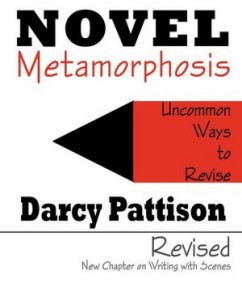
Second, you are also trying to match up your story to your concept of an ideal story. An ideal story–according to you–might be one with lots of action, stirring emotions and a great love story that resolves at the end. Or it might be one of slowly peeling back the layers of action to reveal a character. Whatever your ideal story is–you didn’t hit it on the first draft and the second draft is your chance to try it again.
Third, and related to the first two, the function of a revision is different from the first draft. In the first draft, you are figuring out what story you want to tell. In the second and subsequent drafts, you are figuring out what is the most dramatic way to tell that story. What can you change, how can you structure it differently, so that your reader stays engaged the whole way through?
Revision is the only way to achieve a publishable novel and it’s not scary. It’s just a different phase of writing the story from the first draft–making sure what’s in your head is on the page, and one of matching up a story to an ideal story, and one of considering your reader and making sure you keep that reader the whole way through.

We all know the importance of the first chapter. It must hook the editor and ultimately, the reader, or all is lost. If you don’t pull the reader in with a stunning first chapter, you are sunk.
You can, of course, get thee to a library, where you can sit for lovely hours and read first chapter after first chapter, studying intently as you go. Or, at a retreat in St. Louis this weekend, a writer suggested using samplers.
First you need a Kindle or a FREE Kindle app for the Cloud, iPhone, android phone, iPad, desktop or almost any format you can think of.
Next, search the Kindle store for “sampler,” and you’ll find a host of FREE ebooks that have sample first chapters on a variety of topics. Here are four samplers to start you off.
Be warned! You may find that you simply MUST buy a few of these novels once you read the opening chapters. This could be dangerous to your pocketbook!
Free Ebook Samplers
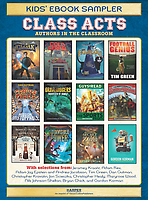
Hunger for Dystopian Teen Sampler
Awesome Adventures for Kids Middle Grade Sampler
Teen Summer Reading Sampler 2012
Class Acts Kids’ Ebook Sampler

I am hard at work on Act 1 of a new story that I am jokingly calling SHARKS.
I have roughly plotted out the story for Acts 1-3, and am now getting serious about Act 1, using two strategies:
Lists Help Me Plot
Creating lists is a helpful way for me to explore possible scenes and remind myself what needs to be included. My first list is a rough idea of the scenes that need to be included in the first act.
I need a scene that:
- captures interest, while introducing the setting and main characters, A and B
- sets up a minor conflict, a sort of running gag
- A meets C and the result is joining a club
- Club meeting
- set up another subplot, one with parents
- Club goes on outing which reveals a global danger to A
- A and B try to warn someone about the danger, but are rebuffed
- A and B are determined to save the world, even if the world doesn’t want to be saved
Does this list seem unfocused and boring to you? It does to me. But it’s a start. These ARE the scenes that I need, but I need to inject conflict and put more at stake in each one. And listing is a help here, too.
Scene 1: Introduce A and B and the outcome is that they don’t like each other.
A good opening strategy is to introduce two characters with a minor conflict that creates a distance between them. I know these guys must work together closely, which means they can’t get along smoothly, there must be conflict. OK. What sort of conflict? For me, that can depend greatly on setting. So, I create a list of possible settings; the general setting is Seattle and Puget Sound, but I need to know a specific setting for a scene, which is grounded in a particular place with particular actions.
- Coffee shop
- School
- Beach
- On a ferry
- Bike rental shop
Discussions with Myself Help Me Plot
Which brings me to the second strategy, and that is a discussion with myself about these options. Some of this is internal, but some of it is actually typing the conversation with myself. How do I know what I think until I write it?
Here’s an example of what I might write to myself:
I’m thinking the coffee shop is a good idea. A comes in and B is working there.
Immediate questions: How old is A? Is this a MG or a YA? If a MG, can he be wondering around on his own and ordering 5 cups of coffee? Teen, yes. 12 yo? Not so sure. This story isn’t YA, though, so it needs to be definitely MG. So the coffee shop must be very close to his grandparent’s house. And he’ll need a steady income, an allowance or something, or he can’t buy that much coffee.
If I use the coffee shop for the opening scene, it is 3 blocks from A’s grandparent’s house; he gets a generous allowance from his parents (Dad is Dr., mom is ambassador, so they can afford this). His first week in the Seattle area, it is plausible for him to become so enamored with coffee that he orders five cups in one morning; that also set up conflict with grandparents for later because he will be wide awake all night. The time change from his move, combined with caffeine could heat things up. I like this possible cause-effect relationship between scenes.
On the other hand, do I want school scenes or not? If so, I need to introduce it early: which is more important to the overall story, a coffee shop or a school yard. Can I reuse the coffee obsession later and have the coffee shop come back? Maybe the “club” meeting can take place in
Today, I am working on rewriting the opening chapter of my story. Many authors say they must go back and rewrite the first chapter because they didn’t know what it needed until it the last chapter was written. The last chapter must be set up in the opening chapter, it must be the inevitable result of what came before it. That’s my case today, and why I am revising the opening of my novel.
I’ve done a previous post on 12 options for opening lines and decided to take my own advice. Here, then, are the 12 openings and I need your help. Which one grabs you and makes you want to know more? Please leave a comment and vote for your favorite; but also tell me WHY it works for you. Thanks!

- It was:
It was a brisk spring morning, the day that Laurel and her Father went to inspect Sloth.
- Viewpoint on life:
Cathedrals take time to build, sometimes decades; and as the walls grow, people come and go, live and die. So it was that Laurel came one day with her Father to inspect Sloth.
- Mid-action:
Laurel groped for Sloth’s cold cheek and caressed the rough stone.
- Dialogue:
“Has Sloth survived this bitter winter?”
- Landscape:
- From her perch atop a twenty foot ladder, Laurel looked across the rooftops of St. Stephens Cathedral at the graceful lines of the stone building and the gargoyles which capped every gutter.
- Alternate for landscape: The city of Montague lay quiet on this early spring morning, except for a brisk wind romping about amidst the towers and gargoyles of the Cathedral of St. Stephens.
- SetUp:
When Laurel turned up missing, her father and the priests of the Cathedral of St. Stephens lit candles in prayer and searched and pleaded with the heavens for news of her, but they didn’t think to look up.
It began on a spring day. . .
-
Meet Jack or Jill:
Laurel was tiny, like a hummingbird, her Father said.
-
Let’s meet Joe, My Friend:
If Laurel was a friend to all gargoyles, her Father was the god of the gargoyles, the master creator.
- I am:
I am frozen in time, a girl who cannot move forward or backward.
- Misleading lines:
I hate cathedrals, all that stone surrounding a person is creepy.
- Alternative media:
To: All Priests of the River Province
From: Cardinal Pater
We beseech you, brethren, to be on the lookout for a missing girl, one Laurel Raymond, daughter of Master Raymond, architect of the Cathedral of St. Stephens.
- Screenplay:
Date: Two weeks after the spring solstice
Where: City of Montague, home of the Cathedral of St. Stephens
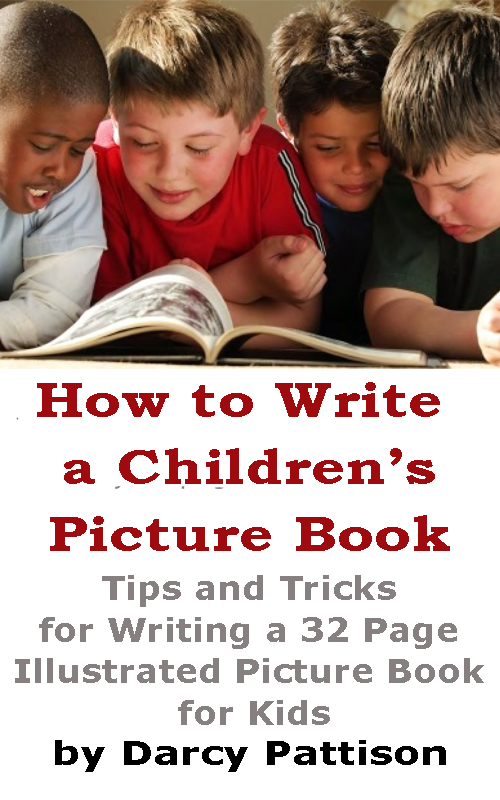 |
-
I always find that plotting a novel or longer story is like a jigsaw puzzle.
How do you work a jigsaw puzzle?
People have different strategies. Some like to find all the straight edges and get the borders in place. Others like to find a strong bit of color and start putting together an interesting bit. Others sort out the pieces: one side out/three sides in, two sides out/two sides in–or some other visual way of sorting.
Plots are like this too.
Border strategy: these writers like to outline their story.
Colorful strategy: these writers like to start with a character or a bit of action and build from there.
Sorting strategy: these writers work all around the story, getting bits of action in place, bits of characterization in place and so on.
How jigsaw puzzles help us understand revision
 As I worked on a revision this week, the jigsaw analogy came in particularly helpful. Writers not only create the overall picture of a finished puzzle, they also create each piece. As I worked on a revision this week, the jigsaw analogy came in particularly helpful. Writers not only create the overall picture of a finished puzzle, they also create each piece.
In revision, this means two things:
- Keep your vision of the finished piece clear in your mind. There’s no box top to look at when we write a novel. There’s only the vision for what the story could be in your mind. You need to keep a clear mental picture of that. And yet, I find the picture changes, much like it does for a painter as s/he paints. I find that I keep the general outline clear, while remaining flexible on details. Does it matter if Jill has a blue sweater or a pink sweater? Maybe. Which means I can let either happen.
- Every part needs to work with every other part. This is a particularly helpful idea when revising a novel. It means that when I am stuck and looking for a solution, I must look to the puzzle pieces already in place to find the answer.
For example, in my WIP, I knew that a birthday party couldn’t come off without a hitch, something needed to jeopardize the story. But what? I tried several things that didn’t work. Finally, I read through the story again, trying to find something that would make the birthday party seem impossible to pull off.
My Main Character (MC) likes to sing and in fact, loves to sing duets with his Dad. Duets. What if two people, without knowing it, planned two birthday parties on the same night? That would put the party in jeopardy: who would go to which party and who would be the loser in the popularity contest? Duet. MC talks to both parties and proposes a Duet, a combined party.
The answer to the plot problem–how to complicate the party–was in the story, as was the solution.
Jigsaw puzzles. We create each piece of the jigsaw and when the story is mostly filled in, it’s difficult. Only one piece will fit there. At that point, look at the overall story, the details of your story. The answer is there, if you look for it.
 |
-
There are two types of first-drafters for novels: those who write too short and must expand and those who write too much and must cut. Today, we’ll talk to those who need to cut when they revise their story.
One complaint for drafts that are too long is that they have too many plots. The first draft is to help you figure out your story; the next drafts are to figure out how to tell that story in the most dramatic way. That’s good theory, but let’s make it more practical. Where do you cut? What criteria do you use?
Who hurts the most? The most dramatic stories will be the most emotional stories. One criteria for revising is to ask, “Who hurts the most?” Where in the story do you find the most emotion, where is the most at stake?
Drama means that something is at stake: the survival of the species, survival of a town or community, survival of a teen in the midst of teasing or bullying, survival of a closely held dream. As you look over your plot and subplot, one goal of revision is to cut subplots with nothing at stake, while raising the stakes in everything you have left.
 Who hurts the most in your story?
For example, if a teen is worried about surviving a bout of teasing, raise the stakes by putting a love interest close by to watch. Now, the teen is risking both safety, pride and the love-of-her-life.
Does something actually happen in this subplot? Let’s say that you take out subplot A. Does the story change? Is this subplot integral to the story, so important that omitting it will change the whole tenor of the story or novel. Some subplots are just fun detours: omit them. Some subplots add flavor or setting or deepens a character; and yet, nothing really happens. If you take bits and pieces of the subplot and slot them into the remaining subplots, you won’t miss the subplot at all. Do the actions of this subplot really advance the story or not? Is this subplot crucial to the story or not? IF not, be ruthless and cut.
Add a subplot. What? I have a story that is too long, but you say to add a subplot. Not exactly. Maybe, though, you can take the extra bits and pieces and restructure them to create a subplot. Instead of disconnected bits, can you build a narrative arc–a subplot–from them? (And while you’re at it, make it all shorter!) Remember that a subplot, by definition, doesn’t have as many plot points as the main plot. So, pick and choose only the strongest scenes to create this new subplot. While you’re at it, try to interweave the subplots and plots to make a more coherent whole. Have the climax of the subplot become a plot-point in the main plot. Failure to defeat the bully means that the teen winds up in the hospital, which means she can’t attend the prom.
| |













 " Saucy is a real character dealing with real stuff—hard stuff that doesn’t have easy answers, not in real life and not in fairy tales, either. This is a really compelling and ultimately hopeful story. Highly recommended."
– Debby Dahl Edwardson, National Book Award finalist and author of My Name is Not Easy
" Saucy is a real character dealing with real stuff—hard stuff that doesn’t have easy answers, not in real life and not in fairy tales, either. This is a really compelling and ultimately hopeful story. Highly recommended."
– Debby Dahl Edwardson, National Book Award finalist and author of My Name is Not Easy





 GT Learners. First, I’ve talked with Gifted and Talented Teachers about how their students learn. When they learn something new, there’s a stage where they are very uncomfortable. Usually, GTs learn quickly and easily; they catch on. But sometimes the material is more difficult than usual, or more complex, or more puzzling. For some reason, they don’t catch on. They are unsure of what to do next.
GT Learners. First, I’ve talked with Gifted and Talented Teachers about how their students learn. When they learn something new, there’s a stage where they are very uncomfortable. Usually, GTs learn quickly and easily; they catch on. But sometimes the material is more difficult than usual, or more complex, or more puzzling. For some reason, they don’t catch on. They are unsure of what to do next. We’ve heard the stories: Dr. Seuss? first book,
We’ve heard the stories: Dr. Seuss? first book, 






 Keep your students reading all summer! The lists for 2nd, 3rd and 4th, include 10 recommended fiction titles and 10 recommended nonfiction titles. Printed double-sided, these one-page flyers are perfect to hand out to students, teachers, or parents. Great for PTA meetings, have on hand in the library, or to send home with students for the summer. FREE Pdf or infographic jpeg.
Keep your students reading all summer! The lists for 2nd, 3rd and 4th, include 10 recommended fiction titles and 10 recommended nonfiction titles. Printed double-sided, these one-page flyers are perfect to hand out to students, teachers, or parents. Great for PTA meetings, have on hand in the library, or to send home with students for the summer. FREE Pdf or infographic jpeg.





























